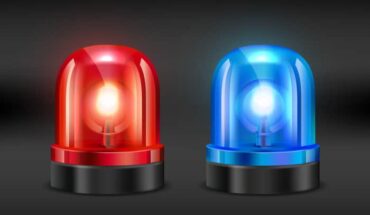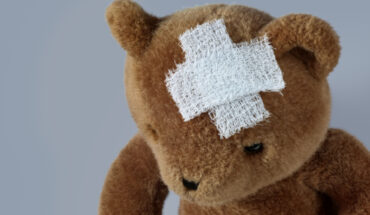Fireworks can be dangerous and need to be treated with care. Even when people intend to use fireworks responsibly, there are many accidents every year resulting in some horrific injuries.
NHS statistics reveal 4,506-people visited A&E from 2014-15 for treatment of a firework-related injury. The British Association of Plastic, Reconstructive and Aesthetic Surgeons (Bapras) have called for packaging to feature graphic images of potential injuries
The last detailed research for Bonfire Night showed 990 injuries caused by fireworks in October and November. Of these:
- 494 were children hurt by sparklers
- 479 people needed hospital treatment from fireworks
- 475 of them occurred at family events or private parties
- 285 of them were eye injuries
The most common injuries on Bonfire Night are burns, debris in the eye from the bonfire or from fireworks and smoke inhalation.
Advanced preparation and simple precautions can dramatically reduce the risk of accidents happening in the first place:
If you are planning to set off fireworks at home ensure you stock up on the following:
- a well-equipped first aid kit
- bucket of sand to put out fireworks safely, easy access to plenty of water and a fire blanket
- sterile saline to irrigate eyes if sparks are blown into them.
There is no doubt that the safest way to enjoy fireworks is at an organised, regulated display, however if you are planning to host a firework display in your home be sure to follow the Fireworks Code.
Remember too that of 90% of firework parties held at home, alcohol is present so it is good to nominate someone who isn’t drinking to be in charge of the bonfire and setting off the fireworks.
Vital tips to remember:
- Never return to a firework that has not gone off and keep everyone, especially young children far away from the site of ignition.
- Only buy fireworks that conform to British Standard number (BS 7114)
- Ensure they are suitable for the size of your garden.
- Keep your fireworks in a closed metal box, removing them one at a time. Never keep them in your pocket.
- Read the instructions on the firework by torchlight not by naked flame.
- Light fireworks at arms length, using a taper.
- Have a rigid board or base for flat-bottomed fireworks.
- Don’t return to a lit firework.
- Never throw a used firework on the bonfire.
- Direct any rockets well away from spectators.
- Other than for New year, it is illegal to light fireworks after 11pm.
Bonfires
Build the bonfire away from buildings, trees, wooden fences and children’s play areas.
Ensure the bonfire is solidly built with a stable base.
Don’t light the bonfire with paraffin or petrol.
Always check the bonfire for hiding pets or wild animals before it is lit.
Make sure the fire is properly out when you are finished. Put water on the embers.
Have water readily on hand for any accidents.
Sparklers
- Sparklers are often perceived as ‘safe fireworks’, however they can get up to six times as hot as a pan of cooking oil or as hot as a welder’s torch so have the potential to cause some serious damage.
- Children under 5 years old should not be allowed to use sparklers and children older than this should be supervised at all times, ensuring they remain a safe distance away from others.
- Be particularly careful with children in fancy dress, as costumes are rarely fire resistant.
- Sparklers should be lit one at a time and you should always wear gloves.
- Never run with sparklers and make sure you don’t wave them too close to others.
- Hold the sparklers horizontally as far away from your face and body as possible.
- Spent sparklers should be put in a bucket of cold water or sand.
- No matter how careful or prepared you are, injuries can still happen. The following first aid advice covers the most common eventualities.
First Aid for burns
If someone is burnt and the affected area is larger than the size of the casualty’s hand, you should phone for an ambulance immediately.
Hold the affected area under cold, running water for a full 20 minutes.
Special care should be taken if the burn is on a young child or an elderly person.
All deep burns of any size will require urgent hospital treatment.
Once the burn has been cooled for at least 20 minutes, the burn can be covered with cling film, a burns dressing or if the burn is on a hand, it can be inserted into a sterile plastic bag.
Never rush to dress a burn. The most important treatment is to cool the burn under cool running water.
All burns should be assessed by medical professionals.
If clothing is on fire:
Remember STOP, DROP, WRAP and ROLL
Stop the person whose clothing is on fire from panicking or running – any movement or breeze will fan the flames causing them to spread.
Drop the casualty to the ground and wrap them in a blanket, coat, or rug. Ensure they are made from inflammable fabrics such as wool.
Roll the casualty along the ground until the flames have been smothered.
Severe burns
A severe burn exposes the casualty to a greater risk of infection, hypothermia and shock.
Immediately instruct a helper to dial 999 or 112 for an ambulance
Start cooling the burn immediately under cool running water.
Use a shower or hose if the burns are large.
Keep cooling the burn while waiting for professional help to arrive.
The area should be cooled for at least 10 minutes. Ensure you are cooling the burn and not the casualty – keep areas that are not burnt as warm and dry as possible.
Make the casualty as comfortable as possible, if appropriate, lie them down and elevate their legs.
Whilst cooling, remove any constricting items (the area may swell), such as jewellery or clothing, from the affected area unless they are stuck to the burn.
Wear sterile disposable gloves if they are available.
For all burns, never:
- touch the burn
- use lotions, ointments and creams
- use adhesive dressings
- pop or puncture blisters
Smoke inhalation
If someone’s inhaled smoke fumes:
- Move them away from the smoke so they can breathe in some fresh air.
- Help them sit down in a comfortable position and loosen any tight clothing around their neck to help them breathe normally.
- If they don’t recover quickly, call 999/112 for an ambulance.
Eye injuries
It is possible for debris and sparks from the fireworks to land in the eye and cause extreme discomfort.
Always wash your hands thoroughly or wear sterile gloves before touching the affected area.
Open the casualty’s eye and look carefully.
If there is anything embedded in the eye, cover both eyes and phone for an ambulance.
If you can see an object moving freely in the eye, use sterile eyewash and gently irrigate the eye to remove it.
Seek medical advice if the casualty is still in pain or discomfort.
It is strongly advised that everyone attends a practical or online first aid course to understand what to do in a medical emergency.
Good to know
If you suffer from heart problems, bronchitis, asthma or other breathing problems, you might be better watching the fireworks from indoors. Anyone suffering from Post-Traumatic Stress Disorder (PTSD) might find the noise, sight and smell of fireworks can trigger stress memories of conflict.
Most pets, birds and animals find fireworks extremely distressing.
- What is a seizure? - 13th March 2025
- Febrile Convulsions and Seizures in Children - 13th March 2025
- Why women are less likely to receive CPR or survive cardiac arrest - 6th March 2025






